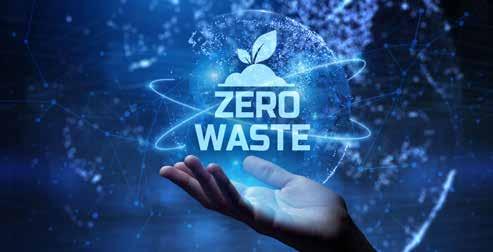RECYCLING
SA PLASTICS PACT LAUNCHES ROADMAP TO 2025 The South African Plastics Pact has launched its official roadmap – a document that outlines the key activities and outcomes to be achieved by 2025.
T
he SA Plastics Pact, which was launched in January 2020, brings together national government, businesses, municipalities, product responsibility organisations (PROs), the informal and formal waste sectors, nongovernment organisations, and other key organisations within the plastics value chain behind a common vision of a circular economy for plastics and to address plastic waste and pollution at its source. The pact forms part of the Ellen MacArthur Foundation’s global Plastics Pact network and follows similar commitments from the UK, France, Chile and the Netherlands. Although each pact sets out its own unique goal, the global pact has collective targets that cover five key areas: • eliminating unnecessar y and problematic single-use plastic packaging • making sure all plastic packaging is reusable, recyclable or compostable • significantly increasing the collection and recycling of plastic packaging
42
FEBRUARY 2021
|
ReSource
• i ncreasing recycled content in plastic packaging to drive demand for recycled material • becoming members of relevant PROs. Being the first of its kind in Africa, the pact is committed to reducing plastic usage by making all plastic packaging reusable, recyclable or compostable by 2025. The roadmap, which was launched in October 2020, outlines key objectives in regard to what the members and supporters of the pact will do to deliver the targets, with key outcomes in two interim milestones (mid-2021 and end 2023), and finally at the end of 2025.
Actions for all targets By 2025, all members of the SA Plastics Pact commit to meeting all five targets as set out by the global pact. Through the roadmap, there are various activities and tools that can be implemented to make progress towards achieving these targets. The SA Plastics Pact sets out the following targets: 1. Act against problematic or unnecessary plastic packaging through redesign, innovation or alternative (reuse) delivery models. 2. 100% of plastic packaging to be reusable, recyclable or compostable. 3. 70% of plastic packaging effectively recycled.
4. 3 0% average recycled content across all plastic packaging. In order to achieve these 2025 targets, the roadmap explores some key activities that need to take place at each of the stages (targets).
Identifying problematic plastic packaging The goal of the first target is to put together a list of problematic and/or unnecessary plastic packaging and items, which essentially need to be ‘designed out’. This will be done through the establishment of an action group, which will be responsible for identifying these problematic plastics and then effectively design models to address these by mid-2021. This list will not only be available to members, but the pact will also develop external guidance for members and non-members to act. Other key focus areas include setting up a strategy for those problematic materials that cannot be eliminated or replaced in the current market – e.g. some PVC formats/flexible multilayers in packaging. They will also strive to improve our understanding of the environmental impact of these material choices, including the role of plastic packaging in preventing food waste and the opportunity to innovate. This will be done through workshops and discussions.
Reusable and recyclable packaging All plastics must be designed to be reusable,





















